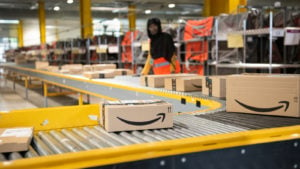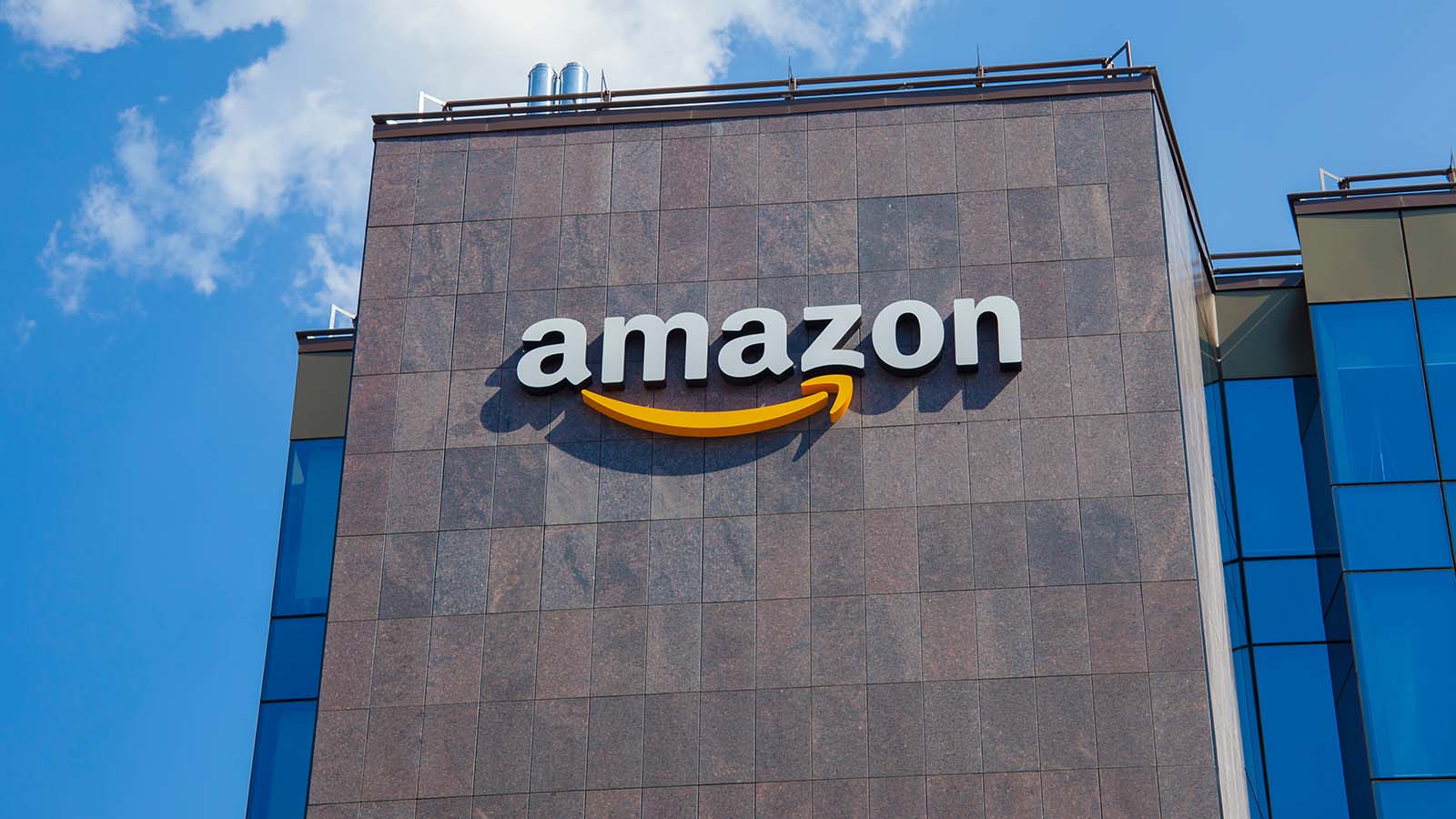As Jeff Bezos hands the proverbial car keys of Amazon (NASDAQ:AMZN) to new CEO Andy Jassy, he’s giving him not just a Ferrari, but an army of them. AMZN stock has a market capitalization of almost $1.8 trillion – a number I’d have though impossible just a few years ago – which means Jassy has enough to buy Ferrari SV (NYSE:RACE) 45 times.

AMZN stock may those be one of those growth investments that comes along once in a lifetime. Unless of course you are Bezos and can use your fortune to create some sort of immortality elixir with fast free shipping.
So yes: The safe money and smart money backs the proposition that Jassy can’t possibly mess this up. Not if he tried and tried and tried and tired, then ran naked and screaming through a trading pit and tried again. The stock might still go up.
AMZN Stock: Unstoppable or Untenable?
Among Wall Street types, AMZN stock remains as strong a buy as you’ll find, with 42 calling it a buy, six overweight and one a hold. Not a single seller in the bunch.
And yet, this kind of endless, unbelievable upward trajectory deserves further scrutiny when one considers market factors Amazon.com cannot control, combined with operational negatives it has so far refused to address or change.
You might think this mega-ultra-behemoth company can get away being the same old Amazon for as long as it likes. At least in theory and based on its investment track record, there’s a strong case for this. But in practice, AMZN stock faces a potential financial tsunami that not even a year’s worth of Prime Days can slow down. What is it? Glad I asked.
Enter a New Investing Megatrend
It’s entirely possible that AMZN will get punished something fierce in the years ahead. Granted, I’m not selling my shares just yet. But allow me to make the case for extreme caution, rooted in an investment phenomenon that’s largely escaped notice in the U.S., but in fact has taken over the world.
No force dominates the institutional finance strategies of the world today like ESG investing. It stands for environmental, social and governance factors that measure and score how responsibly a company behaves. Sounds like a yawner for tree huggers and do-gooders, right? Wrong. Wrong, wrong, wrong, and wronger still. Like, wrongerly wrongo-wrong-wrong-o-rama.
In fact, as far off as you can get, more dunce-like than Jim Cramer ranting at Bear Stearns shareholders in March 2008 not to sell when the company disintegrated into investment infamy just six days later.
ESG and AMZN Stock Challenges
Here are the facts: Between 2018 and 2020, total U.S.-domiciled sustainably invested assets under management, both institutional and retail, grew 42%, to $17.1 trillion, up from $12 trillion. Sold off at the rate of $10 million per day, these funds would take close to 4,685 years to exhaust. To be sure, AMZN stock does not belong to this select group, in fact failing on the “E” and “S” fronts pretty miserably.
A recent hi-profile New York Times piece detailed – with heartbreaking detail – how Amazon has treated its front-line workers as expendable, even when faced with crushing medical conditions. That’s a big, big deal, given that the company is worth some $1.8 trillion. Imagine if they pumped even 5% of that back into better employee treatment. You may not care – but the rest of the investing world is watching.
The danger here is that Jassy, well known as a numbers guy and workaholic, will prove himself tone deaf to these concerns.
On at least one score, he seems like the right guy for the job: He was the CEO and chief architect of Amazon’s cloud business (Amazon Web Services), overseeing the company’s biggest profit driver. And he has the stuff to lead Amazon to stratospheric heights if he can leverage what he’s already built.
Disgusted Consumers Drive Shareholder Losses
But he needs to know, as does as everyone holding AMZN stock, that the ESG phenomenon is driven by boots-on-the-ground consumers. As they make choices such as clean energy over fossil fuels, or socially responsible vendors over draconian ones, this will inevitably decrease revenue in the former categories. Then the big-shot asset managers, even if they put returns first, will simply move their money to the company that wins ESG points and profits in the marketplace.
Even on the climate change score, Amazon is failing. Yes, the company has made green pledges. But by “green,” they must mean cash. According to the Associated Press, Amazon’s carbon footprint grew 15% in 2019.
All of this concerns me. And it makes me wonder whether I am inching into “sin stock” territory by keeping these shares in my portfolio. I’m staying put for now. But I can’t help wondering whether other investors are starting to feel the same. And it would only take some well-funded competitors to offer just what Amazon does, but in a more globally responsible way, for the bottom line to get hurt. Why? Because ESG investors would turn their way.
It’s not so far-fetched a scenario as y’all might think. Jassy’s call, if he is to grow Amazon to new heights, will be to use the company’s galactic-sized coffers to do the right thing. After all, he can’t claim a lack of resources as an excuse to pollute less, care more and treat workers better – much better – in the years to come.
On the date of publication, Lou Carlozo held a long position in AMZN. The opinions expressed in this article are those of the writer, subject to the InvestorPlace.com Publishing Guidelines.
